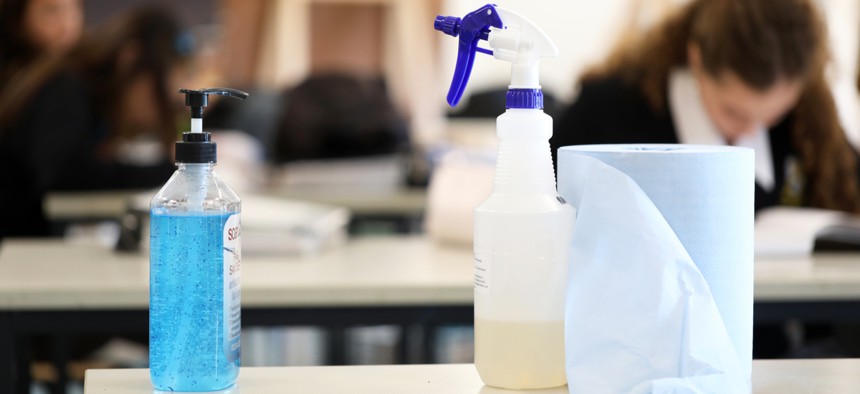Data Must Lead the Way to Reopening Our Schools

cr8tiveshotz/Shutterstock.com
Informed decision making is key.
Safely opening our schools is a national imperative. President Biden wasted no time in issuing an executive order directing the federal government to support the safe reopening of schools as soon as possible. Deciding when and how to return to in-person instruction involves weighing a host of factors beyond infection rates, including access to technology for virtual learning, disparities in learning loss, student and teacher attendance patterns, COVID-19 mitigation efforts, housing and nutritional challenges facing families, to name a few.
Decision-makers need actionable, real-time data on these factors to understand the rapidly changing scenarios at play in our schools. This statement seems shockingly obvious, but currently, far too many decision-makers do not have access to this kind of basic information. Without objective and comprehensive data, parents, teachers, administrators, and policymakers alike are in the dark; unsure if they really are making the decisions that will best help students and educators.
A rapid survey of our country’s schools can help immediately fill this gap in knowledge. As proposed by education and data experts, and already backed by a 50-organization coalition, a School Pulse Survey is long overdue and much-needed. The survey could be modeled on the highly successful Census Bureau’s Household Pulse Survey launched in spring 2020. By surveying school administrators instead of households, it would collect accurate, timely and relevant data and complement other school-based data collection efforts, such as formative assessments (e.g., MAP) and school climate surveys (e.g., Panorama).
Imagine the difference real-time data could make to advancing the public conversation about when and how to reopen schools. Rather than rely on anecdotes, parents, teachers, administrators, and policymakers could have access to information from across the country about what mitigation efforts worked, how attendance rates changed for groups of students, what digital learning is available (or not), and what equity gaps exist that need to be addressed.
We already know the pandemic has taken an unequal toll, with vulnerable students and families experiencing greater loss and bigger hurdles to recover. The survey must also measure inequities in the pandemic response and ensure data can be disaggregated by factors such as race, gender, English learner status, and disability.
A School Pulse Survey should be an open data resource for the country, with publicly accessible summary information visually presented in a way the public can access and understand it, not just researchers with PhDs.
Here’s the good news: The survey is a practical and political no-brainer for education policy. The president already called for expanding data collection in his executive order. The Department of Education’s Institute of Education Sciences proposed the idea of a School Pulse Survey, and recently announced its intention to pilot an initial version of the survey. Many members of Congress also agree. It requires only modest resources to carry out the survey, about $5 million a year and minimal new staff. And although IES has the resources to support a pilot survey, implementing a robust one will require Congress’ assistance. Surely Congress can muster the political will to support and fund an extremely low-cost, high-reward opportunity to ensure parents, teachers, advocates, administrators, and elected leaders have the information they need to safely reopen our schools.
If we are going to get students and teachers back to school safely, we can’t leave the decision up to chance. Our students, who have already experienced much hardship over the past year, deserve better. We must ensure that critical decisions that affect their well-being and their future are informed by real data and evidence.
Kate Tromble is vice president of federal policy at Results for America.
Nick Hart, Ph.D. is president of the Data Foundation.





